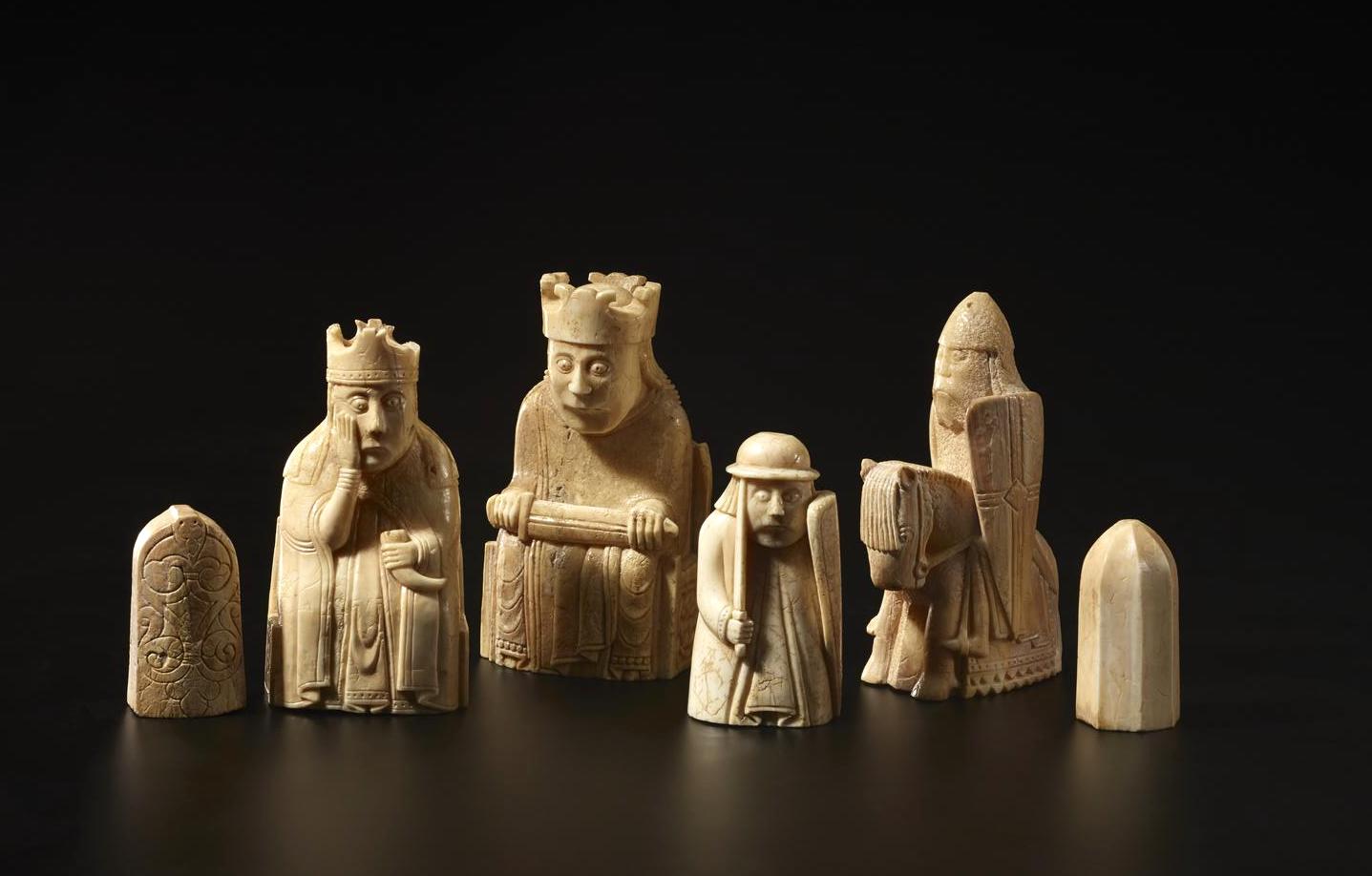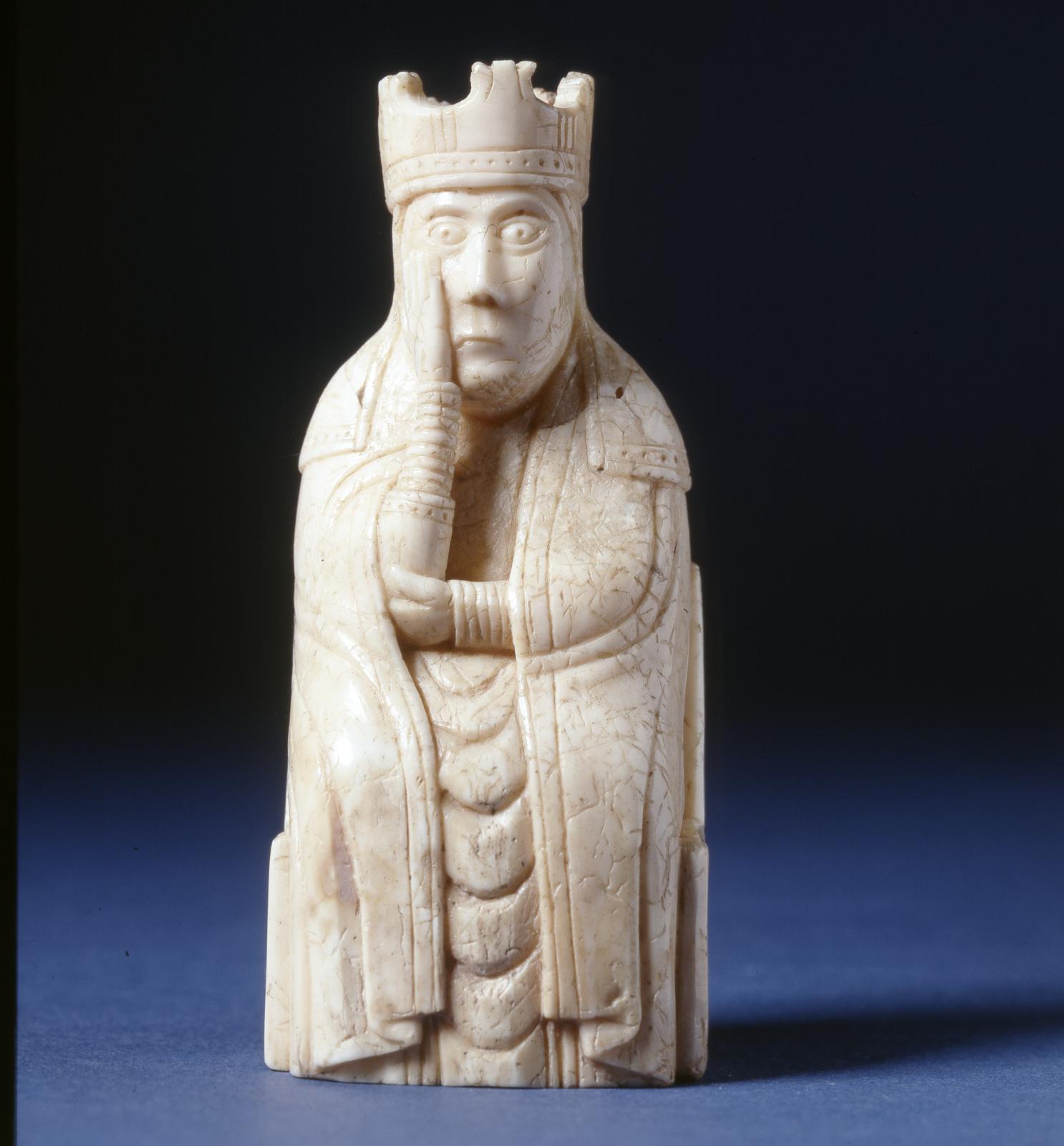Gallery:
Europe 1050-1500
Room / Case / #
40 / 5 /
Trades in Tusks and Toys
Trades in Tusks and Toys
Whilst from the 6th C in India men were clever enough to invent and play chess, men from long before then didn’t see that walruses and elephants could make better use of their tusks than we could. Both chess and tusks travelled the ancient trade routes. Walrus from Iceland and Scandinavia, then Greenland was the main source of small piece ivory for Northern Europe, whilst from the 13th The Genoans traded the larger African elephant ivory together with dyes and the mordant alum through the Atlantic to Northern Europe in exchange for textiles.
These chess pieces were made in Norway of walrus tusk and were likely en-route to Ireland to be sold. 78 of them were found on the Isle of Lewis, Scotland. No one knows what they were doing there. Originally some would have been coloured red. I am not sure if this king is worried baout what he has done or about what he should do. He is about 9cms tall.
The earliest known chess piece is 7th C from the Sogdian city of old Samarkand. Chess was quickly adopted by the Persians and then the Muslims after their conquest of Persia. The Muslims then spread it to Iberia and it was entertaining the nobles throughout Europe by 11th C. Russia got the craze through the Volga river trade routes to the Caspian Sea although what the exchange rate was for furs, amber or slaves is a mystery. It was, and is, very popular in Mongolia where the bishop was a camel, the knight a horse and the rook a cart. “Shah Matt” is Persian for The King is Helpless and probably the source of Check-Mate.
This set also featured in Harry Potter and the Philosopher’s Stone
When you leave the chessmen, the Clock Gallery that you came from should be on your right as you make your way to the Sutton Hoo Gallery.

